Moka Pot Brew Perfect Coffee
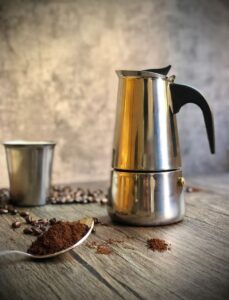
Moka Pot Brew Perfect Coffee
Main Contents
- A. Intro to Moka Pot
- B. A Brief History of Coffee Percolators
- C. The Resurgence of Coffee Percolators
- D. How Does a Moka Pot Work?
- E. 5 mixing steps of Moka Pot
- F. Conclusion
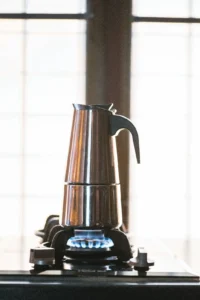
A. Intro to Moka Pot
In the world of coffee, there are countless coffee brewing methods, each offering a unique experience and flavour.
Among these methods, the Moka Pot coffee maker is a symbol of timeless tradition and the art of making coffee at home.
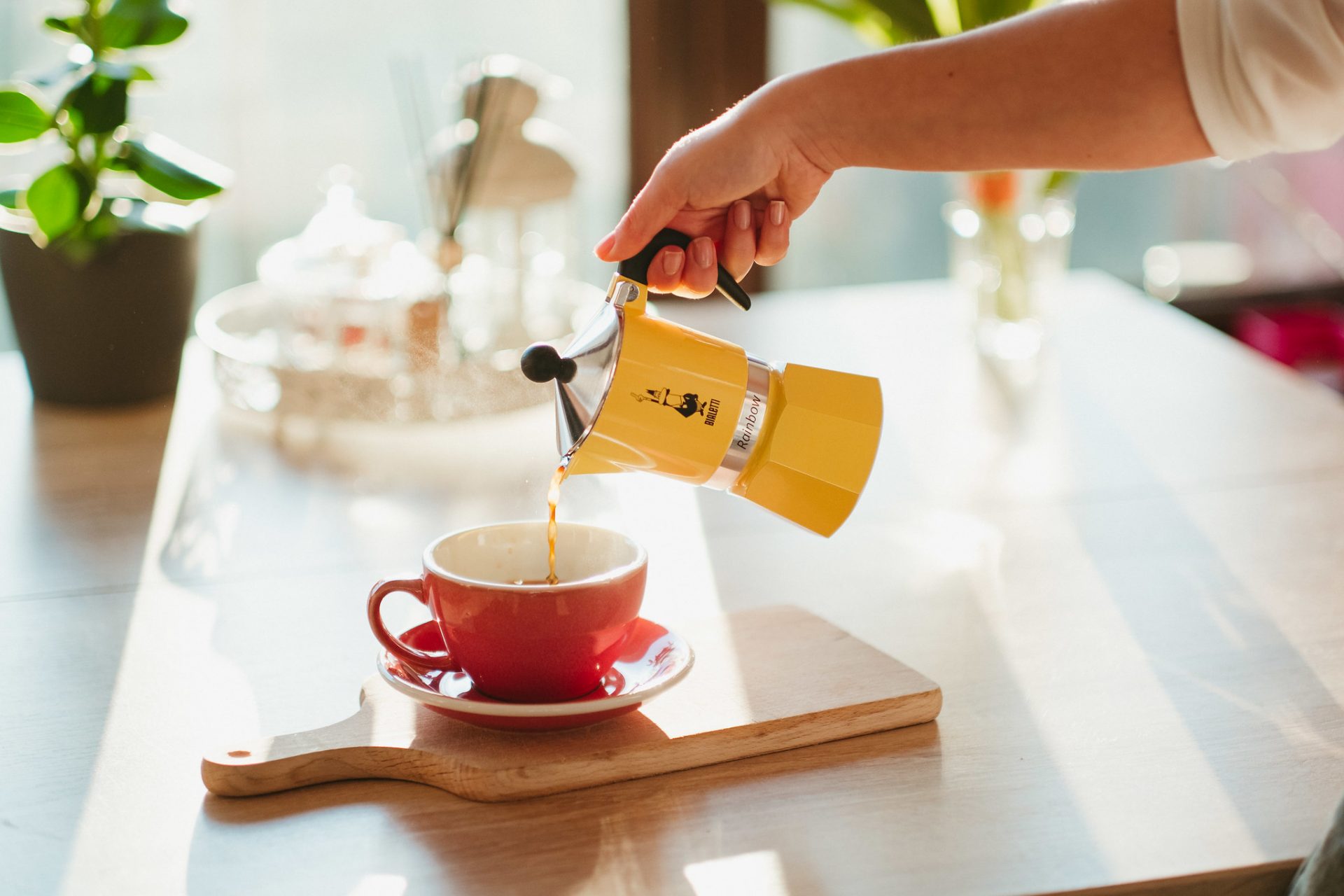
B. A Brief History of Moka Pot
Moka Pot, with their unmistakable bubbling sounds and rich aromas, have been a beloved fixture in homes and campsites for generations.
Over the years, these brewing devices evolved, becoming a symbol of traditional coffee preparation methods.
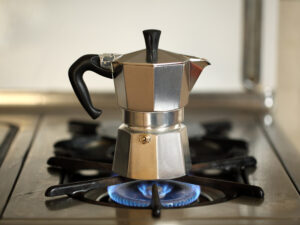
C. The Resurgence of Moka Pot
While automatic drip coffee makers and espresso electric machines have taken center stage in the modern coffee scene, there has been a resurgence of interest in Moka Pot.
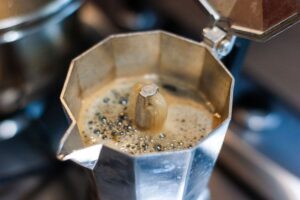
D. How Does a Moka Pot Work?
Components of a Moka Pot
To truly appreciate to understand the inner workings of a Moka Pot, it consists of the following:
- Pot or Boiler: The bottom chamber is where water is heated.
Made of stainless steel. - Percolator Tube: A vertical tube that extends from the bottom chamber to the top. This tube carries hot water from the bottom to the top, cycling it through the coffee grounds.
- Basket: Located at the top of the percolator, the basket holds the coffee grounds. As water cycles through the coffee, it extracts the flavours and oils.
- Lid: The lid covers the top of the percolator, helping to trap steam and direct it back into the pot.
- Spout and/or Knob: The spout allows the brewed coffee to flow out of the percolator, while the knob (optional) on top of the lid often serves to monitor the brewing process.
The Brewing Process: Step by Step
- Add Water:
Add desire amount of cold water to the bottom chamber. The water should not exceed the safety valve. - Insert Coffee Grounds:
Place ground coffee in the basket. The amount of coffee you use depends on your taste preference. - Assemble and Heat: Assemble and ensure the basket is properly seated.
Place it on a heat source, such as a stovetop burner or an induction cooker. - Heating and Cycling:
As it boils, the hot water is forced up the percolator tube and into the coffee grounds in the basket. This cycle repeats, with hot water cycling through the coffee grounds multiple times. - Bubbling and Aroma:
You’ll hear a distinctive bubbling or percolating sound. This process extracts the flavours and aromas from the coffee grounds, resulting in a rich brew. - Monitoring the Brew:
When it reaches continuous air bubbling, you can remove it from heat source. - Serve and Enjoy:
Cautiously pour the freshly brewed coffee from the spout into your coffee cup or mug.
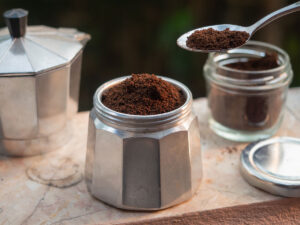
E. 5 mixing steps of Moka Pot
Technique 1: Choosing the Right coffee.
You need to choose the perfect coffee beans.
- Freshness is key:
Freshly roasted coffee, roasting date on the package and roasted within the last two weeks for optimal flavour. - Consider the roast level:
Each roast level has its own flavour. A medium to medium-dark roast usually works best. - Single-origin vs. mixed beans: Go for single-origin beans, which showcase distinctive flavours that can be balanced, unique and aromatic.
Technique 2: Grind size matters.
The grind size of coffee beans significantly affects the flavour and strength of the coffee. For brewed coffee, a medium-fine grind is ideal. Here’s why:
- Avoid over-extraction: Grinding finer can lead to over-extraction, leading to a bitter taste.
- Consistency is key: Invest in a blender with quality conical burr to achieve a consistent grind size.
Moka Pot Brew Perfect Coffee
Technique 3: Accurately measure water temperature
Accurate measurements and the right water temperature are important.
- Coffee to water ratio: A general guideline is ratio one of coffee to ten of water. Adjust this ratio accordingly.
- Water temperature: The optimal water temperature for brewed coffee is approximate 92°C to 96°C.
Technique 4: Perfecting the brewing time.
For a balanced and flavourful cup of coffee:
- Start with a preheated coffee maker to maintain a steady temperature throughout the brewing process.
- Pay attention to the bubbling: Watch this process closely.
- Time matters: A general rule is to let the coffee steep for about 7-10 minutes. Adjust the time accordingly.
- Remove from heat quickly from the heat source to avoid over-extraction.
Technique 5: Proper maintenance and cleaning:
Clean regularly: After each use, disassemble and thoroughly clean all parts.
F. Conclusion
The timeless allure of Moka Pot lies in their ability to bring forth the essence of coffee through a simple, yet captivating brewing process.
The resurgence of interest in Moka Pot is a testament to the enduring charm of this brewing method.
Remember that the beauty of coffee lies not only in the final cup but also in the process itself—the bubbling, the aromas, and the anticipation of that first sip. So, gather your favorite coffee beans, get a Moka Pot and brew your way to coffee excellence at home.
It’s time for you to brew some Specialty Coffee.
Try our coffees
Every few months we sourced from different countries to select the best farm coffees harvest. We gently micro-batch drum roast all of our coffee beans in our roastery in Singapore. Indulge yourself in our flavourful coffees!
Get our fresh roast coffee beans on-demand from our Lazada and Shopee stores:
Lazada.sg/shop/soji-coffee/
Shopee.sg/soji.coffee
Or visit our shop at : 38A Beo Crescent Market #01-52 Singapore 169982 (Opening Hours > Click Here < )
-
Product on sale
![[THE AFRICA SAFARIS BLEND] ETHIOPIA TRIO (LIMITED NEW! 2026](https://soji.coffee/wp-content/uploads/2025/12/The-Blends-ARTWRK-ETHIOPIA-TRIO-1-500x500.jpg) [THE AFRICA SAFARIS BLEND] ETHIOPIA TRIO (LIMITED NEW! 2026SGD Price range: $39.99 through $75.99
[THE AFRICA SAFARIS BLEND] ETHIOPIA TRIO (LIMITED NEW! 2026SGD Price range: $39.99 through $75.99 -
Product on sale
![[THE CARIBBEAN PACIFIC BLEND] COLOMBIA DUO (LIMITED NEW! 2026)](https://soji.coffee/wp-content/uploads/2025/12/The-Blends-ARTWRK-COLOMBIA-DUO-1-500x500.jpg) [THE CARIBBEAN PACIFIC BLEND] COLOMBIA DUO (LIMITED NEW! 2026)SGD Price range: $33.99 through $64.99
[THE CARIBBEAN PACIFIC BLEND] COLOMBIA DUO (LIMITED NEW! 2026)SGD Price range: $33.99 through $64.99 -
Product on sale
![[THE CARIBBEAN PACIFIC BLEND] HONDURAS+BRAZIL (LIMITED NEW! 2026)](https://soji.coffee/wp-content/uploads/2025/12/The-Blends-ARTWRK-HONBRA-1-500x500.jpg) [THE CARIBBEAN PACIFIC BLEND] HONDURAS+BRAZIL (LIMITED NEW! 2026)SGD Price range: $32.69 through $60.99
[THE CARIBBEAN PACIFIC BLEND] HONDURAS+BRAZIL (LIMITED NEW! 2026)SGD Price range: $32.69 through $60.99 -
Product on sale
![[THE CARIBBEAN PACIFIC BLEND] NICARAGUA+BRAZIL (LIMITED NEW! 2026)](https://soji.coffee/wp-content/uploads/2025/12/The-Blends-ARTWRK-NICABRA-1-500x500.jpg) [THE CARIBBEAN PACIFIC BLEND] NICARAGUA+BRAZIL (LIMITED NEW! 2026)SGD Price range: $31.89 through $59.69
[THE CARIBBEAN PACIFIC BLEND] NICARAGUA+BRAZIL (LIMITED NEW! 2026)SGD Price range: $31.89 through $59.69 -
Product on sale
![[THE KNIGHTS BLEND] Ⅲ HORSEMENS (LIMITED NEW! 2026)](https://soji.coffee/wp-content/uploads/2025/12/The-Blends-ARTWRK-THE-KNIGHTS-1-500x500.jpg) [THE KNIGHTS BLEND] Ⅲ HORSEMENS (LIMITED NEW! 2026)SGD Price range: $30.25 through $57.29
[THE KNIGHTS BLEND] Ⅲ HORSEMENS (LIMITED NEW! 2026)SGD Price range: $30.25 through $57.29 -
Product on sale
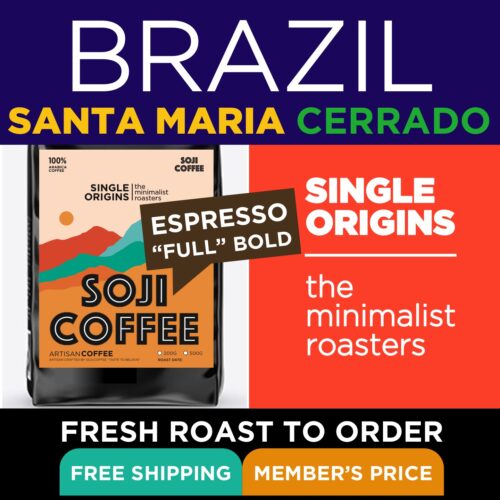 BRAZIL SANTA MARIA CERRADO (Espresso)SGD Price range: $10.99 through $40.89
BRAZIL SANTA MARIA CERRADO (Espresso)SGD Price range: $10.99 through $40.89 -
Product on sale
 BRAZIL SUL DE MINAS (Espresso)SGD Price range: $10.99 through $40.89
BRAZIL SUL DE MINAS (Espresso)SGD Price range: $10.99 through $40.89 -
Product on sale
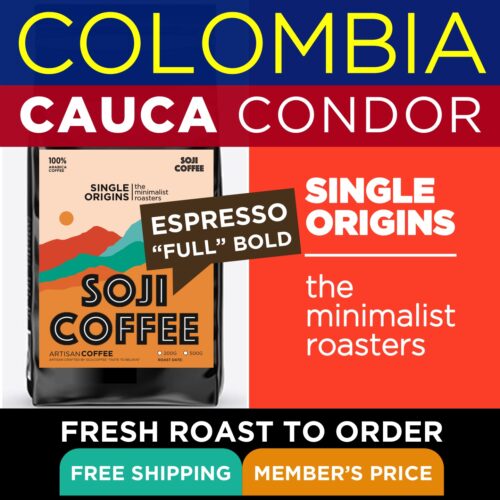 COLOMBIA CAUCA CONDOR (Espresso)SGD Price range: $12.59 through $55.99
COLOMBIA CAUCA CONDOR (Espresso)SGD Price range: $12.59 through $55.99

